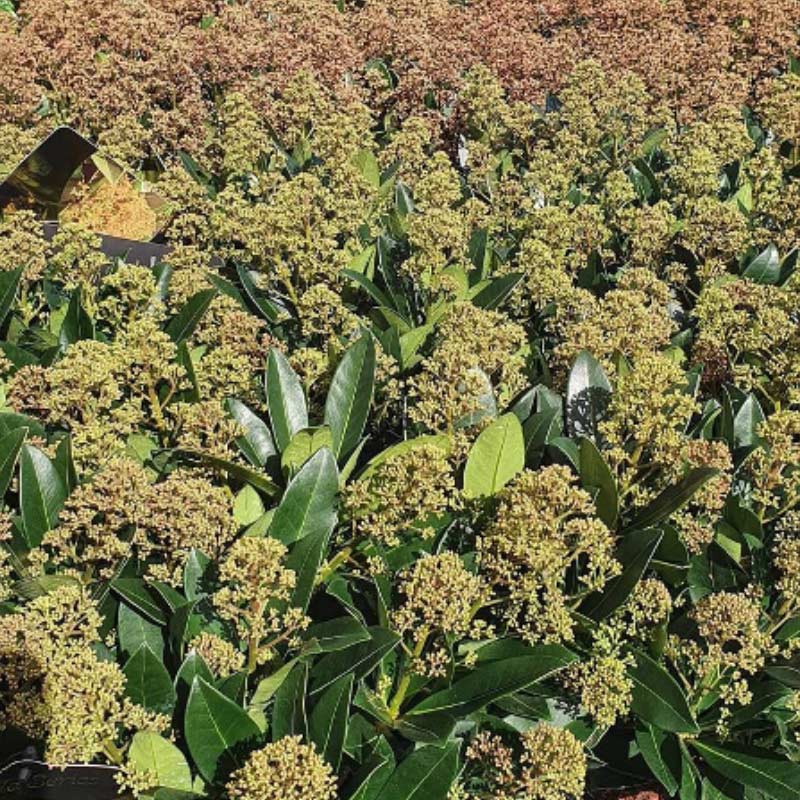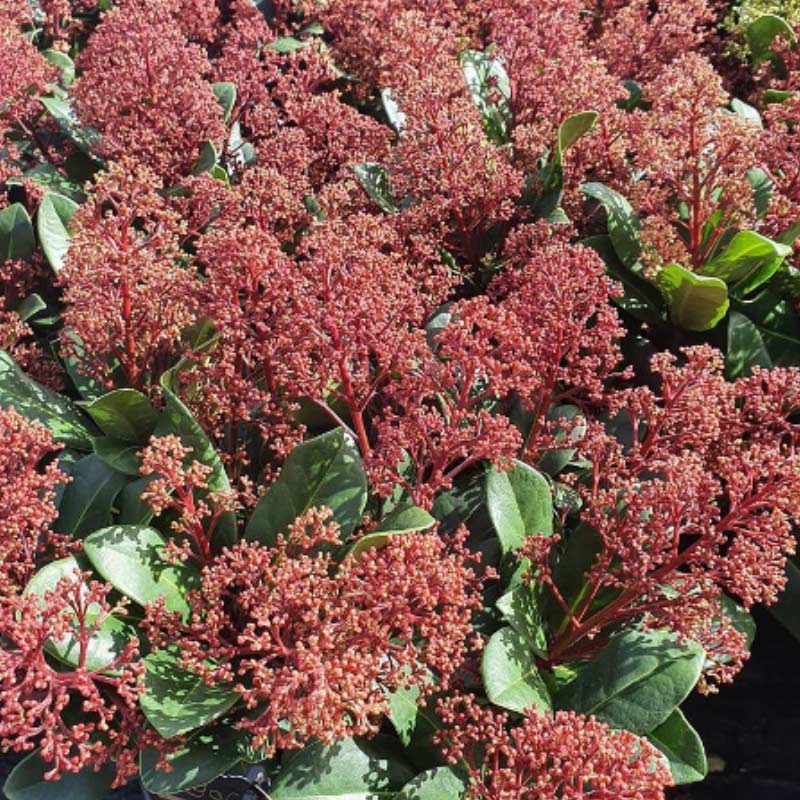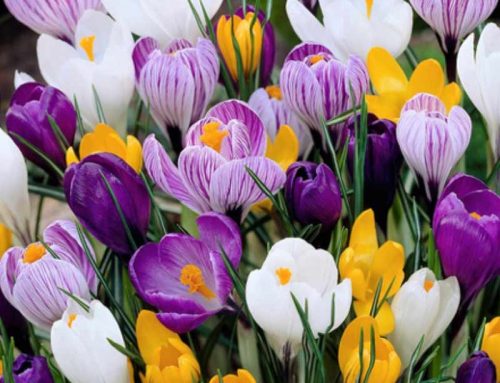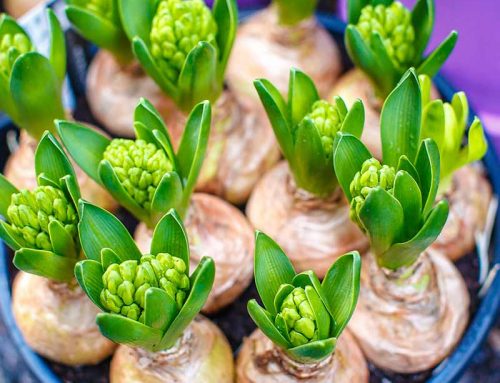What flowers should you plant in autumn/winter?
It is that time of year again, shorter days and longer nights. Choose the right plants and bulbs to keep your garden looking vibrant throughout the colder months. September is actually a great time to plant, the soil is still warm and there should be enough rain to get everything bedded in. Try to find room for winter-flowering camellia, these bring unexpectedly exotic flowers at Christmas time ,they need acid soil, so you may have to fill your outdoor plant pot with ericaceous compost.
1.Asters
There’s a reason these perennials are favorites: Their pink, blue and purple flowers (usually with a bright yellow center) offer a cool contrast to the warmer autumn colors of the changing leaves and grasses. They’re also hardy in almost every climate. Aster bloom from summer to well into fall, and even through winter in the mildest areas, but they don’t always live as long as other species. The New England aster varieties are notable for their range of colours and their adaptability to wet soils. Fairly tolerant, but grow best in fertile soil. The taller asters may need staking and you may have problems with mildew. Divide if plants become invasive or woody. For the biggest swath of lavender blooms, plant in full sun. The daisy-like blossoms also repel deer and attract butterflies.
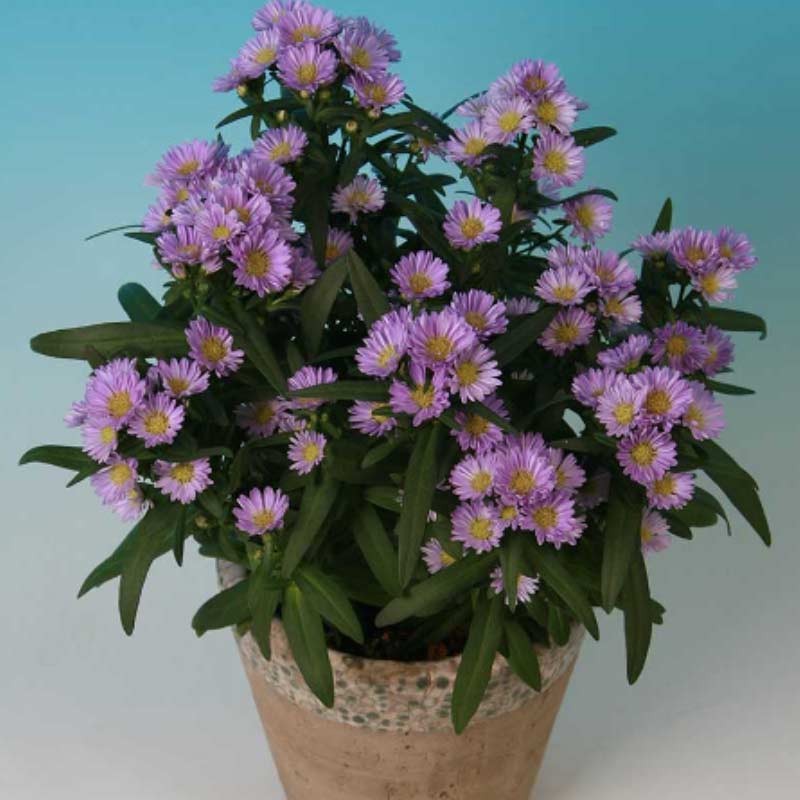
2.Camellia
Camellias are dense shrubs with brilliant foliage, flowers may be white, pink, red, or streaked, and blooms can be single or double. They offer bright, long-blooming flowers, and serve as popular foundation and specimen plants. They usually bloom around the holidays or very early spring. Yellow leaves are often a sign that they are not getting enough iron or manganese – this happens in alkaline soil where the plant is unable to access these minerals. Sequestered iron can help this process but acidic soil is best. The beloved flowering varieties are more common in gardens. Most are either forms of C. japonica or C. sasanqua, or a hybridized variety. It’s important to know the species type, since C.sasanqua blooms in mid-fall to early winter, while C. japonica flowers from mid-winter through early spring.
Prune them immediately after flowering ends in early winter. Japonicas flower later, and can also be pruned just after their bloom season ends. Hybrids may flower at either time, so simply prune when the flowers are done.

3.Chrysanthemums
Chrysanthemums or mums, as they are sometimes called, are perennial autumn flowers. They are available in a wide variety of colours and shapes making them the perfect addition to brighten your autumn garden. Mums are pest and disease-resistant, so they’re ideal for any garden. They work well in pots and in garden beds. Set the pots in bright, indirect light and water consistently throughout autumn. To keep them blooming (and looking neat), cut off buds as they wilt.
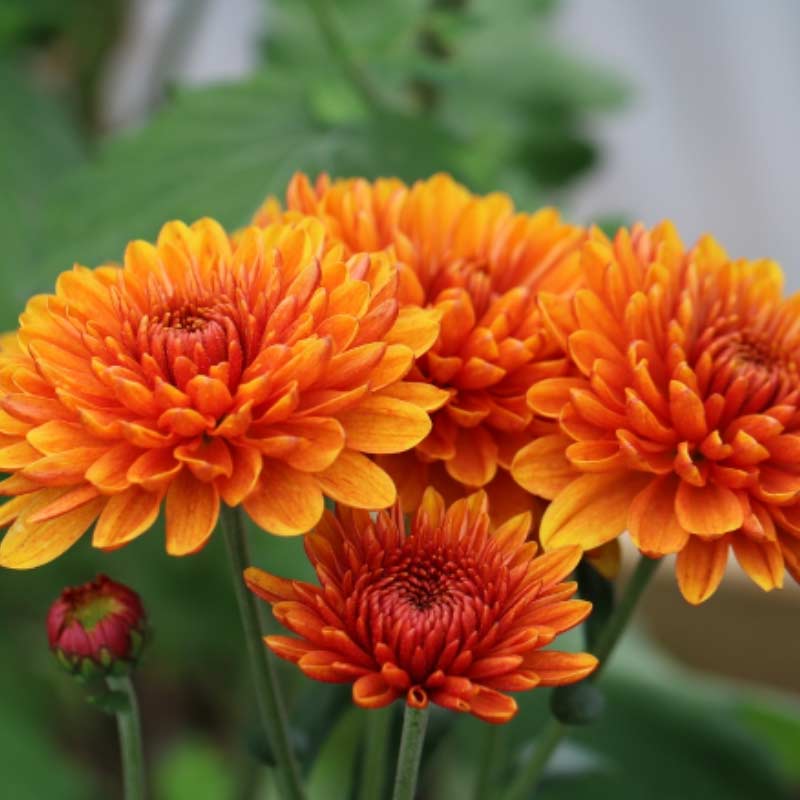
4.Cyclamen
The well-loved hero of the plant world, the cyclamen can be brought to flower from autumn through to spring. Its flowers come in red, pink and white shades and look fantastic in pots or planted under trees. Its silvery, marbled leaves complement its sugar pink and white blooms, remaining unscathed through winter weather before dying back for a dormant summer

5. Dogwood / Cornus
Cornus is a small woody shrub grown for its colourful bare stems in winter. Look for C. alba sibirica for red stems and C. sericea ‘Flaviramea’ for yellow bark. Cornus will grow in moist soil and look good alongside a stream. Plant Cornus where they will be either back lit by the low winter sun, or the sun will strike the red stems. Cornus is easy to grow shrub with a preference for sun to produce the best colour, but tolerant of most conditions. This type of cornus is cut back in early spring (after the first year or two so the shrub is established, to just a few centimetres as per the image below. This helps to ensure good colour in the winter stems the following year. Cornus sanguinea “Midwinter Fire” is said to be less vigorous, and as such should not be pruned so hard.
Cornus need no real attention, plant and they will grow. To keep the stems in really good colour, cornus do best if cut back almost to the ground in March which looks savage at the time, but they quickly grow back. It also means you have a clump of lovely red coloured stick / small plant supports for the coming growing season.

6. Echinacea
There are plenty of Echinacea species available for home gardeners, it’s a hardy perennial with a long blooming season. Not only do the flowers attract butterflies and bees, they’re great cut as well. Take a look at the new hybrids that are even hardier and sport even more colours and flower shapes. Provide well-drained soil, but otherwise coneflowers will do well almost anywhere in full sun or, in the hottest area, some light shade. They can handle drought conditions as well. Deadhead to keep the flowers coming. Keep the seed heads in place after the flowers fade for birds to enjoy.

7. Heather
The hardy heather can often be found on moors as it’s a versatile plant that’s able to handle inclement weather. With pink, white or purple petals, heather is a brilliant plant that creates a low-growing texture and makes great potted flowers. They handle bad weather particularly well and have a long flowering season from November to March.

8. Hellebores Niger / Christmas Roses
This winter, everything will be coming up roses as long as you plant some hellebores. The distinctive flowering plant is nicknamed the Christmas rose because it starts to bloom around Christmas and has white, bowl-shaped flowers that look similar to that of a wild rose. While they look delicate, they’re surprisingly tough, so just make sure they have some sun and moderate water. Plant them by a window, patio, or walkway so that the winter blooms may be enjoyed to the fullest.
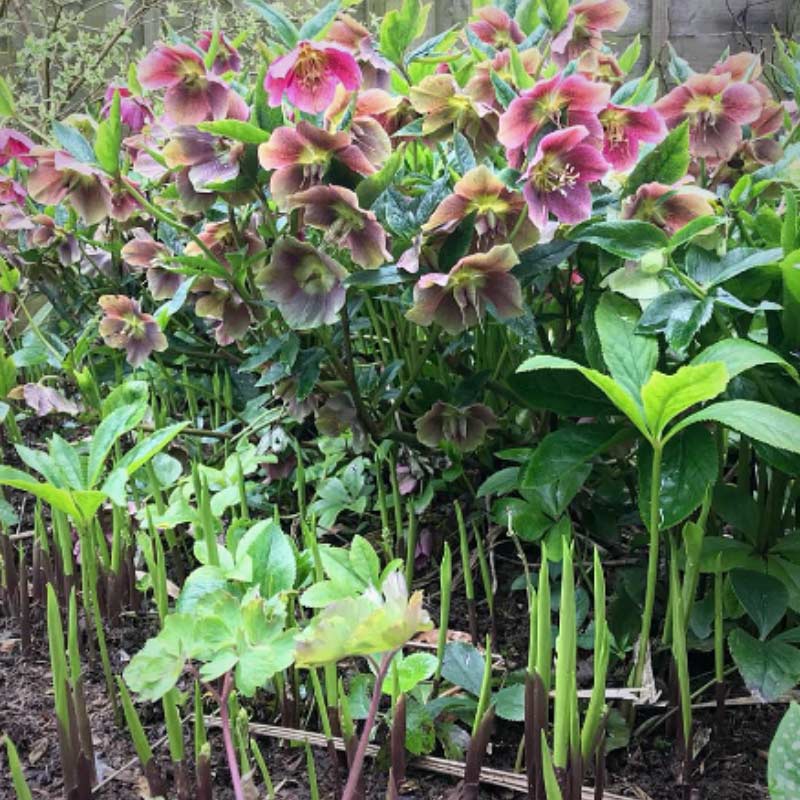
9. Heucheras
Heucheras are often at their best in autumn, the colours of the foliage intensify in cold weather. These are reliable colour right through from fall to spring and summer. Use them as part of a planting combination or use individually in pots and group them with other permanently planted containers. They look great with spring flowering bulbs too.
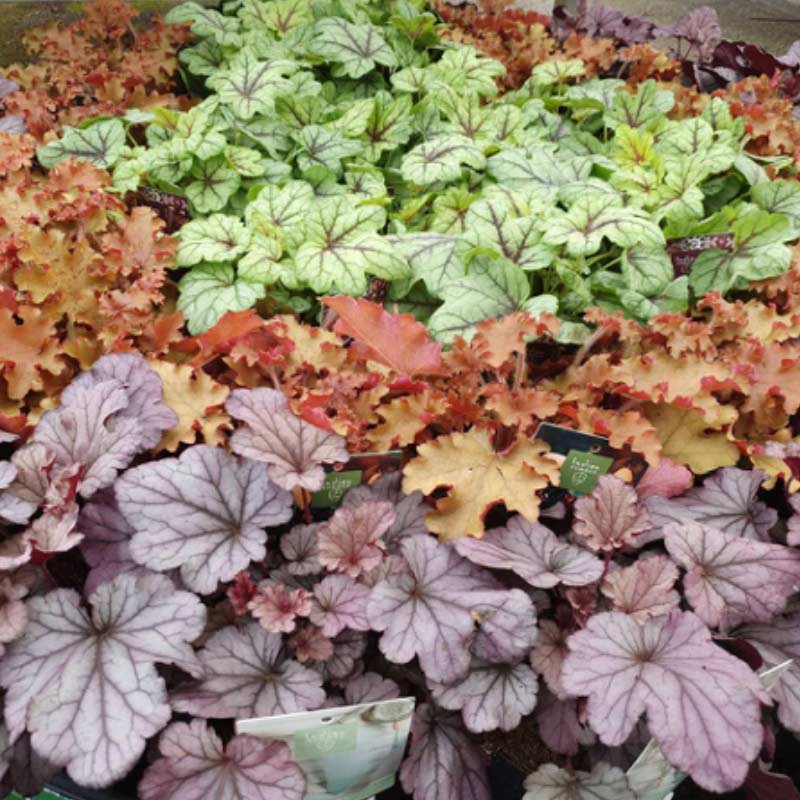
10.Ornamental Cabbage and Kale
These showy plants in shades of purple, rose and cream boast beautiful frilly leaves, and the colour intensify as it gets colder. They prefer a chill, so don’t plant them while it’s still warm or they tend to get floppy.
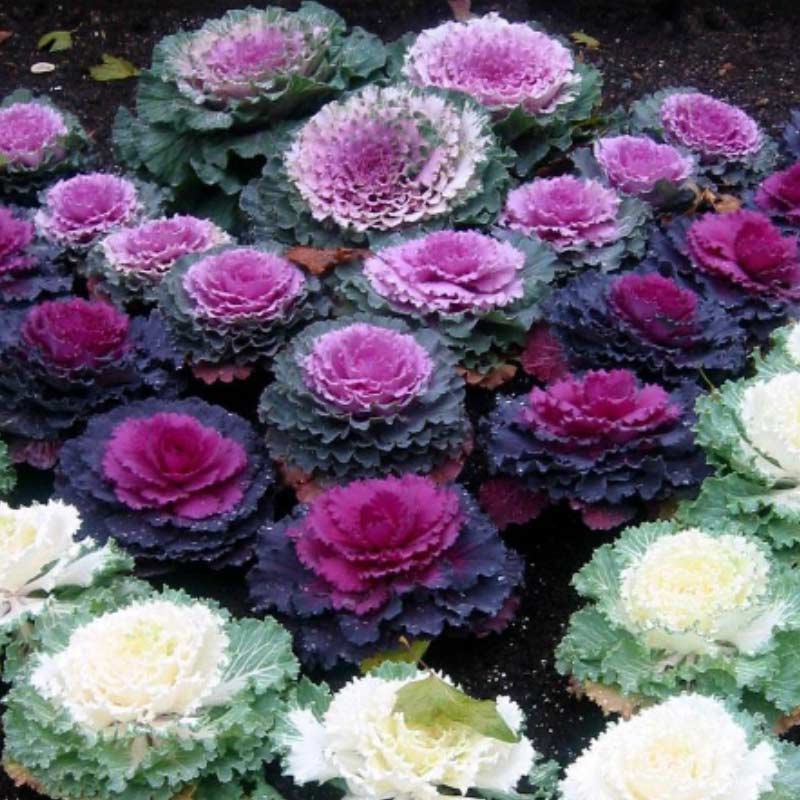
11. Pansies
Pansies can’t tolerate heat, but they can withstand the winter. Plant them at the end of summer and they’ll bloom until a hard frost. Then expect to see their smiling faces pop up again in the spring.
Pansies are a gardener’s staple all year round. Many varieties stop blooming when it gets really cold.
However, you can opt for the special winter-flowering pansies which will keep going until late spring. These are ideal for filling pots and window boxes for a flash of colour to be seen from indoors.

12. Pieris Japonica
Hundreds of bell-like flowers, which start blooming in late winter and last for weeks and weeks, dangle from fine stems on this striking evergreen shrub.
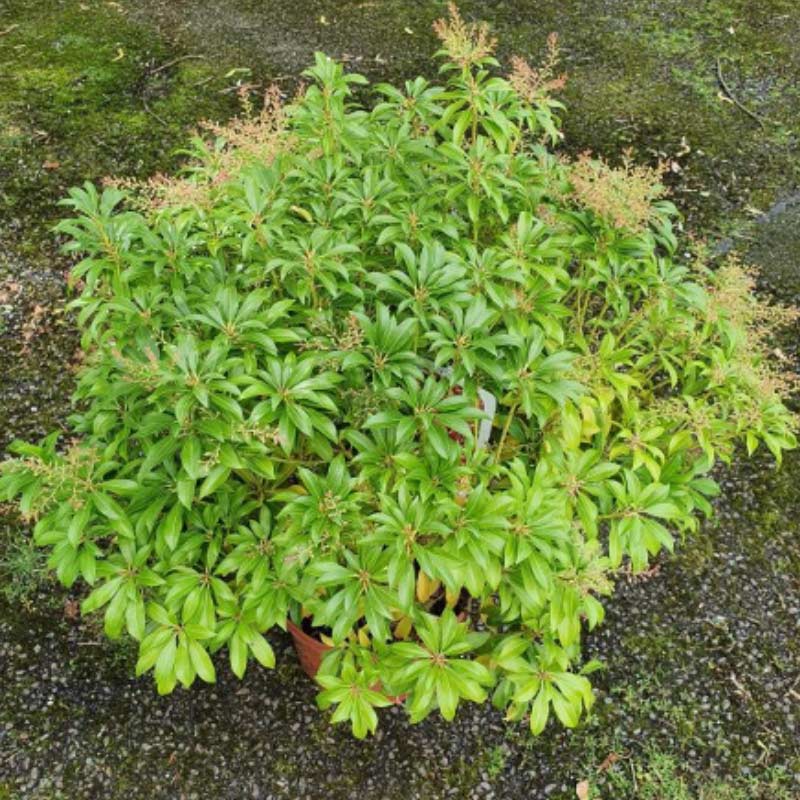
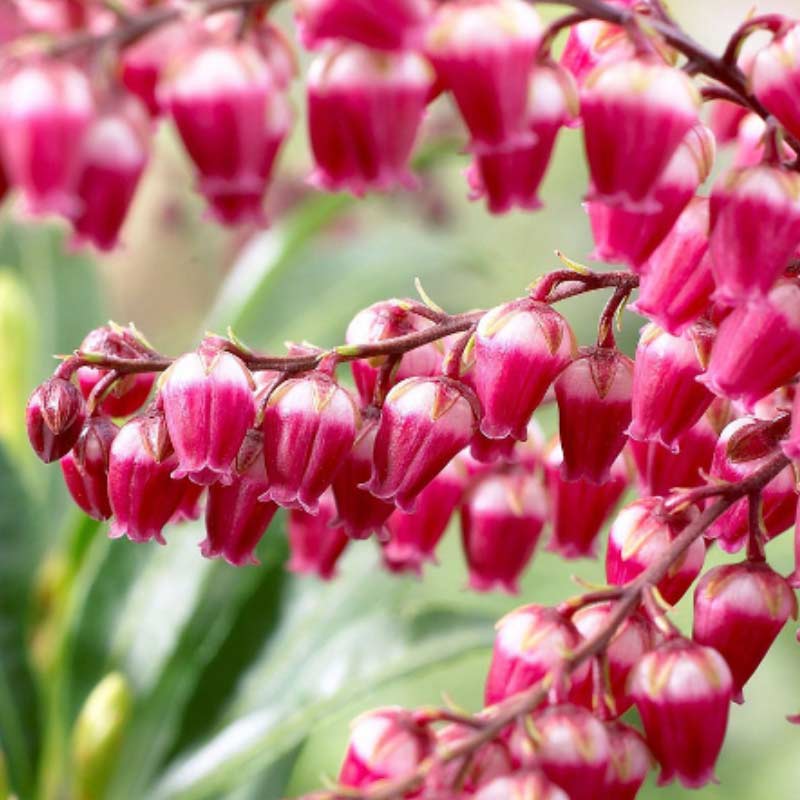
13. Senecio cineraria / Dusty Miller
This fluffy silver plant, which is also known as Jacobaea Maritima, would make for an unexpected addition to your garden. Give it full sun and well-drained to keep it healthy.
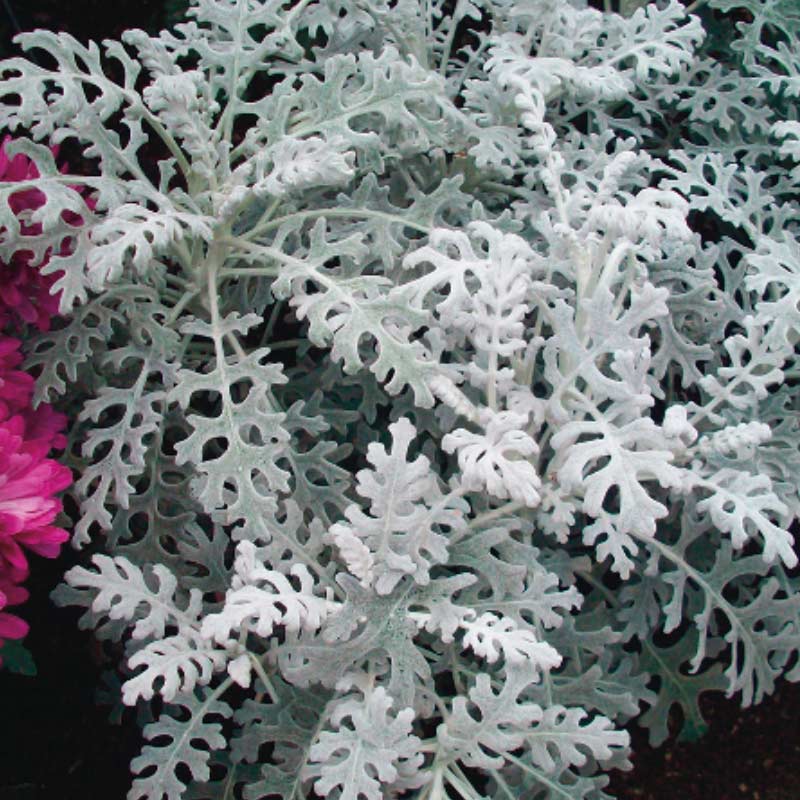
14. Sedum
Watch this succulent plant sprout up in the summer before bursting into a deep pink or red in the fall. Since sedum stores water in its leaves, it’s incredibly heat and drought resistant, and butterflies love the wide, dense flowers. Sedums are easy to grow and do better in poor dry soil with good drainage than in areas that are very wet. They are reasonably drought tolerant once established. Once the flowers are past their prime, let them dry and use them for indoor flower arrangements. You can cut the plants to the ground in fall or keep them in the garden for winter interest, then cut them back in late winter or early spring.

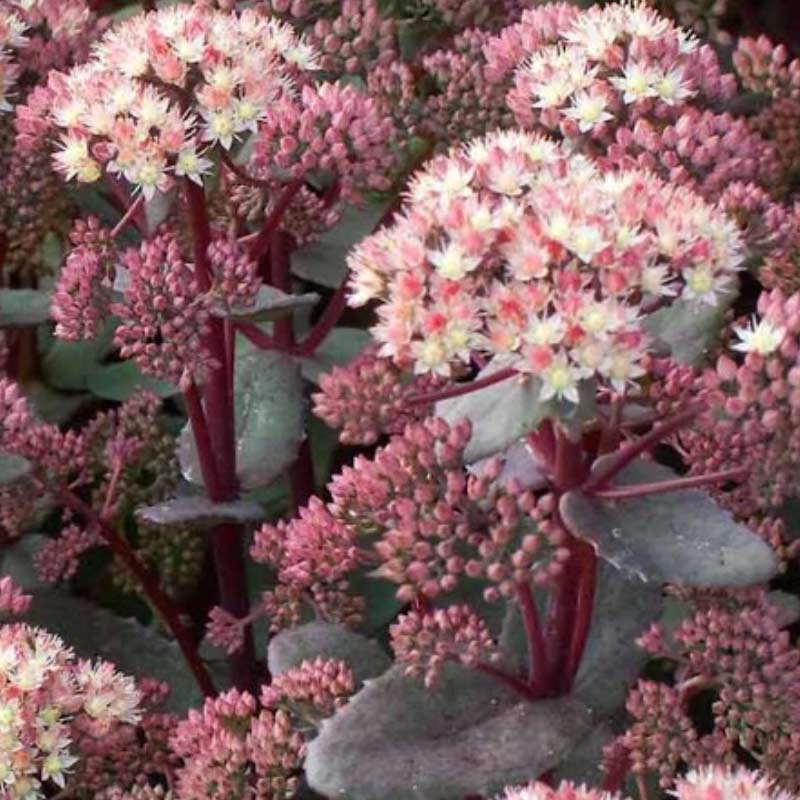
15. Skimmia
Skimmias are evergreen shrubs that are extremely valuable for their multi-season display especially in winter. Their glossy evergreen leaves provide a lovely foil to their fragrant white or yellowish flowers in April and May and long-lasting winter berries. Excellent structural plants in a small urban courtyard or in front of a house, skimmias are happy in dry shade. Skimmia berries are bigger and brighter than those of holly and it’s worth growing a male among females, or a self-fertile variety.
Skimmias grow naturally into a loose dome and do not require pruning, except perhaps for minor adjustments.
Skimmias are fairly indestructable, tolerating drought, they are not fussy about soil but are happy in acid conditions, making them good companions for azaleas, rhododendrons, and camellias.
Skimmias tolerate life in a pot, although yellowing leaves are a sign of iron deficiency (add sequestered iron).
